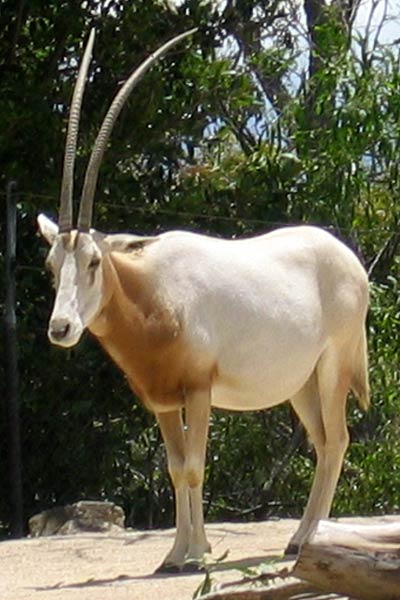Facts About Scimitar oryx
The scimitar oryx, also known as the scimitar-horned oryx or Sahara oryx, is a visually striking antelope species that once roamed extensively across North Africa. Tragically, these magnificent creatures became extinct in the wild by the year 2000. However, dedicated conservation efforts, including reintroduction programs in countries such as Chad, offer hope for their return.
These antelopes are easily recognized by their long, curved horns and striking white coats, which are highlighted by red-brown chests and black markings. Historically, they have a rich background and were even domesticated in Ancient Egypt. Interestingly, the myth of the unicorn might have originated from sightings of a scimitar oryx with a broken horn.
The decline of the scimitar oryx was due to a combination of climate change, habitat loss, and hunting for their horns. Today, they are bred in captivity in several countries, and reintroduction programs are actively working to restore these animals to their natural habitats.
Scimitar oryx are exceptionally well-adapted to desert life. They possess efficient cooling mechanisms and require minimal water to survive. Their diet consists of foliage, grasses, succulent plants, and various plant parts. They have a unique reproductive cycle and historically formed herds that migrated seasonally. Being diurnal, they would rest during the hottest parts of the day to conserve energy.
Conservation efforts for the scimitar oryx include captive breeding programs and reintroduction into protected areas in Tunisia, Morocco, Senegal, and Chad. However, these animals face challenges such as diseases and parasites, including cryptosporidiosis. Although the IUCN lists the species as extinct in the wild, ongoing reintroduction programs aim to restore them to their natural environments.

 Algeria
Algeria